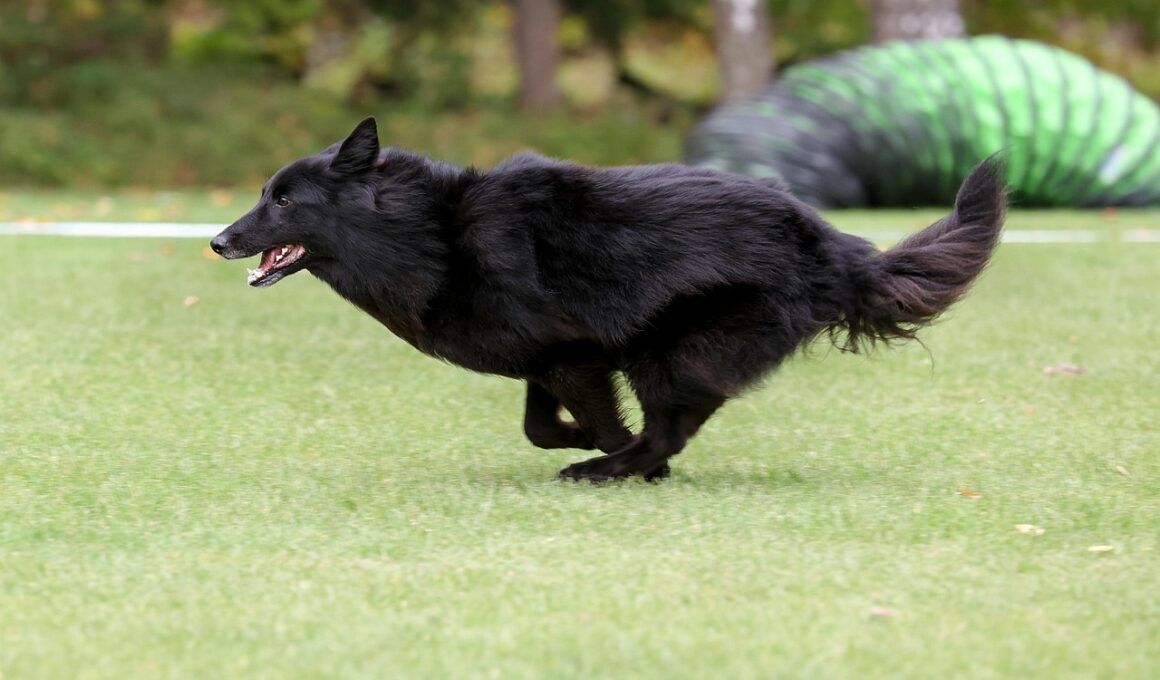How to Get Started with Agility Training for Dogs
Agility training is a fun and rewarding way to exercise your dog while strengthening the bond you share. If you want to get started with this exciting sport, there are several steps you can take to ensure both you and your dog are ready to tackle the agility course. First, consider the appropriate age for your dog to begin training; most dogs should be at least one year old. Next, familiarize yourself with the various types of obstacles commonly found in agility courses including jumps, tunnels, and weave poles. Each obstacle requires specific techniques for your dog to navigate effectively, so prepare to work on those skills individually before combining them all. Additionally, understanding your dog’s temperament is crucial; a more playful pup might enjoy agility training more than a shy or reserved dog. Training should be fun, involving plenty of positive reinforcement such as treats and verbal praise to keep your dog motivated and engaged. Remember, patience and persistence are key to achieving success, so take your time and enjoy the learning experience together.
Once you’ve established the foundational knowledge and skills, setting up a training routine is essential. Consistency is the backbone of any training program, so choose a schedule that works for both you and your dog. Working in short sessions, around 10 to 15 minutes, can keep your dog focused and eager. Allow time for breaks to prevent exhaustion and boredom, as dogs can lose interest quickly if the training session drags on. Mix in playtime and rewarding activities to make the experience enjoyable. Moreover, consider joining a local agility training class or group where you can learn techniques from experienced instructors. These classes also provide an opportunity for socialization, both for you and your dog. Look for clubs or trainers offering introductory courses in your area. Additionally, you can seek online resources such as tutorials or videos showcasing various agility skills and techniques. Always observe closely how your dog responds to different exercises and adjust the plan accordingly to meet their needs. You should foster a positive training environment where your dog feels comfortable and excited to participate.
Choosing Equipment and Obstacles
As you progress with agility training, selecting the right equipment becomes important. Typical agility tools include jumps, tunnels, and contact equipment, which are used to teach your dog how to maneuver effectively through an obstacle course. When starting out, you might want to invest in basic equipment that accommodates your dog’s size and skill level. There are many affordable options available for purchase or even DIY projects you can build at home. For instance, a simple jump can be made from PVC pipes, while tunnels can be found at local pet stores or online. Ensure that the obstacles you choose are safe and appropriate for your dog’s training level to avoid injury. Furthermore, familiarize your dog with each obstacle one at a time, gradually increasing difficulty as their confidence and competence improve. Always supervise your dog during practice sessions to safeguard against mishaps. Additionally, agility training can also be done in your yard or at a local park, providing flexible options for your training regimen while ensuring ample space for your dog to excel.
Using positive reinforcement is essential in agility training. Training methods rooted in positive reinforcement promote trust between you and your dog. Whenever your dog successfully completes an obstacle or follows your command, provide immediate praise and rewards. This could include treats, toys, or verbal affirmations. Consistency in reinforcing good behavior will accelerate learning and encourage your dog to enjoy the process. Avoid punishing or scolding your dog for mistakes, as this could lead to fear or anxiety surrounding training. Instead, redirect to keep the training upbeat and engaging. If your dog struggles with a specific obstacle, break the task into smaller components that are more manageable. Gradually increase the complexity as your dog masters each step. Remember to observe your dog’s body language and be sensitive to their stress levels. Training should always be a safe and positive experience for your furry friend. Celebrating small victories will help build confidence and motivate them to tackle even the most challenging obstacles. Engage in this journey together; agility training is as much about your enjoyment as it is about your dog’s progress.
Incorporating Fun and Variety
To keep agility training engaging, it’s crucial to add variety to your sessions. Repetitive practice can lead to boredom, so changing your routine will keep your dog interested and eager to learn. Introduce new obstacles or rearrange existing ones to create a fresh challenge every time you train. Moreover, spice up the training environment by switching locations; training in different parks or backyards offers novel smells and distractions that can enhance learning for your pet. Incorporating games into the training routine might also be beneficial. For example, you could set up a small course, then race against the clock to instinctively build excitement. This competitive edge can motivate your dog and turn practice into a delightful event. Additionally, fostering playtime around training sessions reinforces positive experiences. After a successful practice session, take a few minutes to engage in a fun game of fetch or tug-of-war. Maintain a balanced approach that mixes work with playtime so that your dog associates agility training with enjoyment rather than just another chore.
Monitoring your dog’s health and physical condition is vital during agility training. Agility requires physical strength, coordination, and endurance, so keeping an eye on your dog’s wellbeing can help prevent injuries. Regular veterinary check-ups can ensure your dog is fit to engage in rigorous activities. Also, consider incorporating warm-up exercises, like stretching, to prepare your dog’s muscles before intense training sessions. After practice, take the time for cool-down exercises to ease any strain. Always be attentive to signs of discomfort or fatigue; if your dog shows reluctance to complete obstacles or appears distressed, it might be time to take a break. Create a unique training plan that prioritizes your dog’s health and well-being, gradually introducing more complex challenges as their fitness improves. For older dogs or those with health concerns, adapting the training approach is essential, such as reducing jump heights or incorporating gentler exercises. The goal is to enjoy the process while ensuring your dog remains healthy and energetic throughout their agility experience.
Competing and Progressing
Once you and your dog have mastered the basics of agility training, the prospect of entering competitions may present itself. Competing can be an exhilarating experience, showcasing your dog’s skills amidst fellow enthusiasts. Before entering any events, evaluate both your and your dog’s readiness. Familiarize yourselves with the rules and regulations of the competition to ensure compliance and understand judging criteria. Attend local trials or exhibitions to observe how courses are set up and how teams perform. This exposure allows you to have realistic expectations and prepare mentally for what’s to come. Sometimes, competition can be daunting for some dogs; introducing your dog gradually to such environments may alleviate stress. Competing should be a continuation of the fun you’ve experienced through training. Celebrate achievements, both big and small. After participating in competitions, utilize the experiences to assess areas needing improvement and to further hone your training. Always remember, the primary goal of agility training is to have fun and enhance the bond between you and your furry friend; championships and trophies are secondary.
In summary, agility training for dogs serves as an excellent opportunity for physical and mental stimulation. By following the suggested practices, you can cultivate an engaging environment for your training sessions. Emphasizing positive reinforcement, variety, and a careful approach to your dog’s health will lead to a successful agility journey. Start with basic obstacles, gradually advancing to more challenging courses as your dog grows in confidence and skill. Involve playtime in the routine to maintain enthusiasm, adding games and environmental changes to keep the sessions fun and interesting. Monitoring your dog’s health, making modifications to training as needed, and fostering a playful atmosphere enrich the overall experience. Lastly, consider competitions once you feel comfortable, as they can provide rewarding experiences both for you and your dog. Ultimately, the most significant aspect of agility training is the bond it fosters between you and your dog, turning routines into cherished memories. Enjoy the journey, and rest assured that with dedication and passion, both of you can thrive in the world of dog agility. See where this exciting adventure takes you, together.


